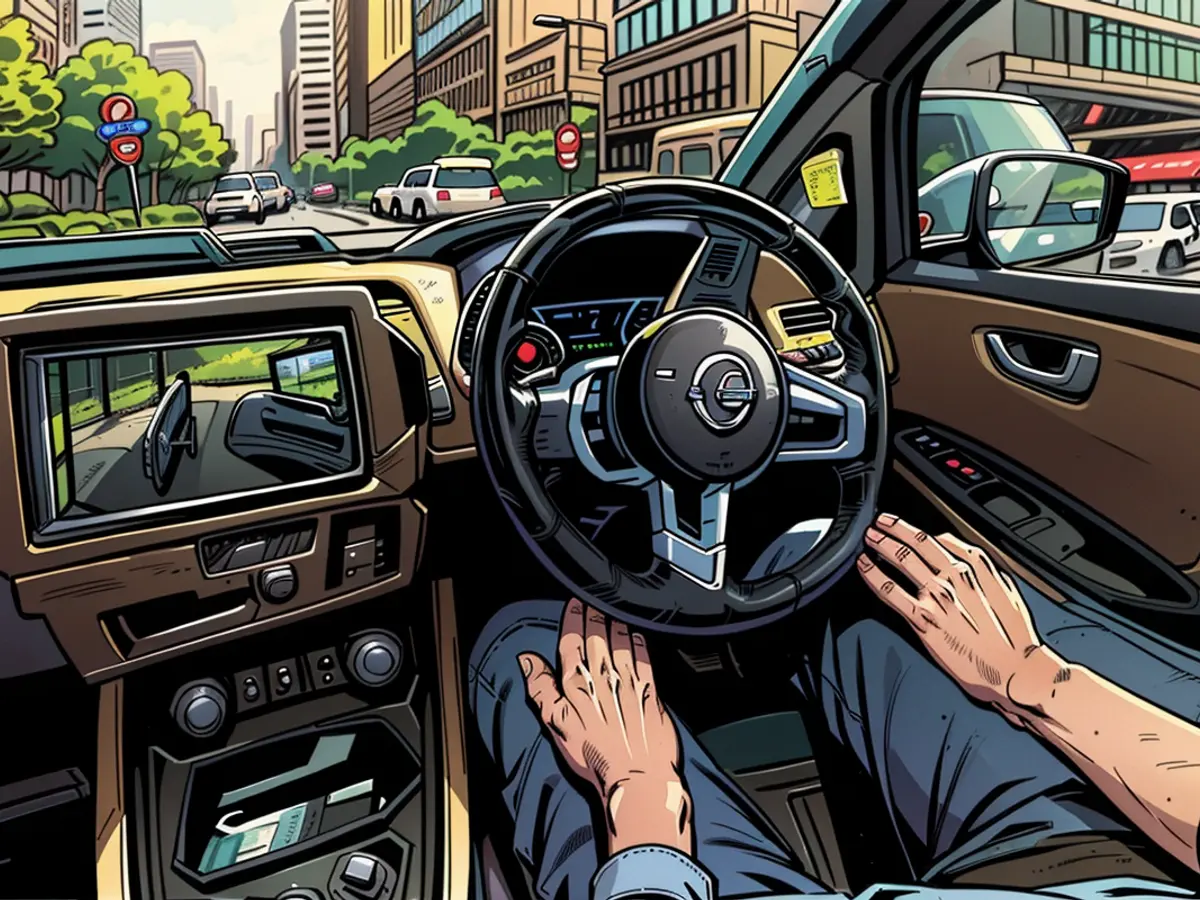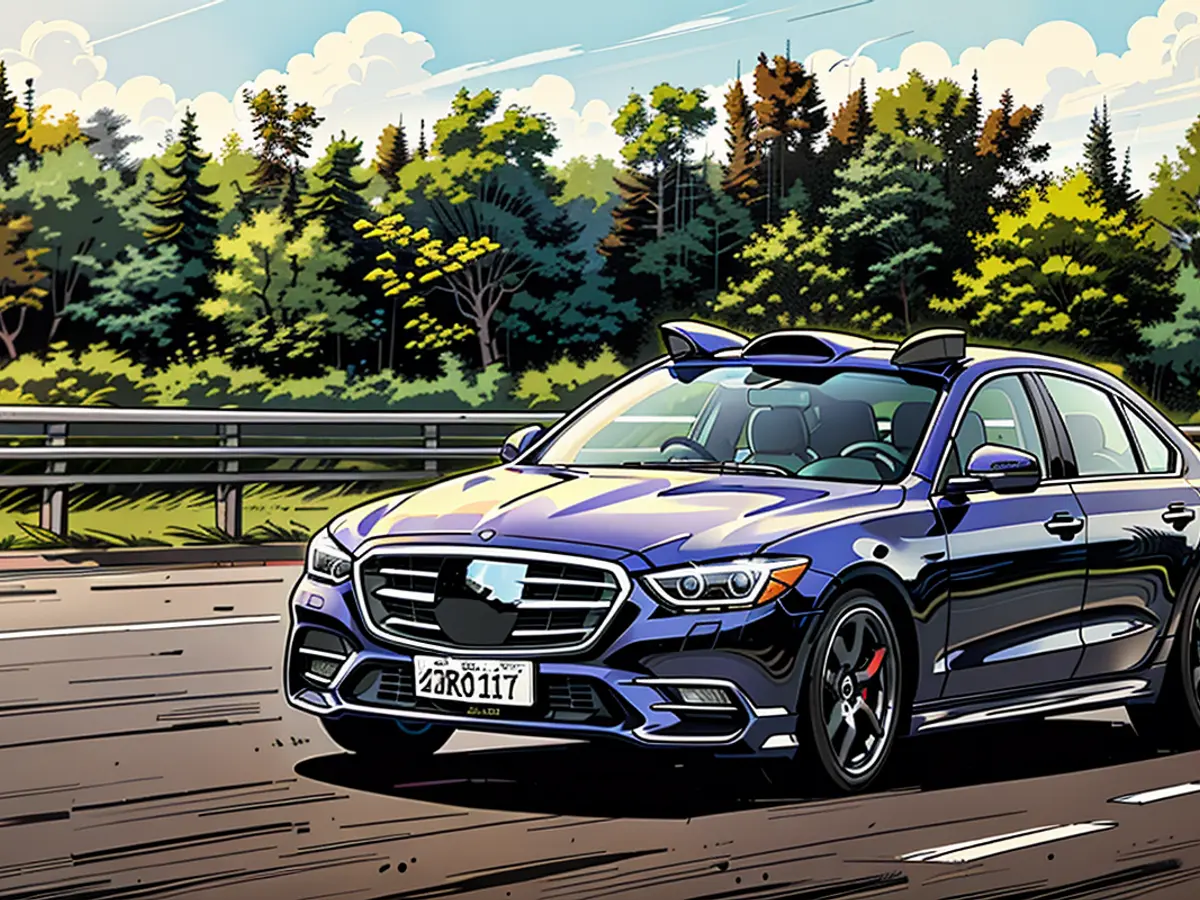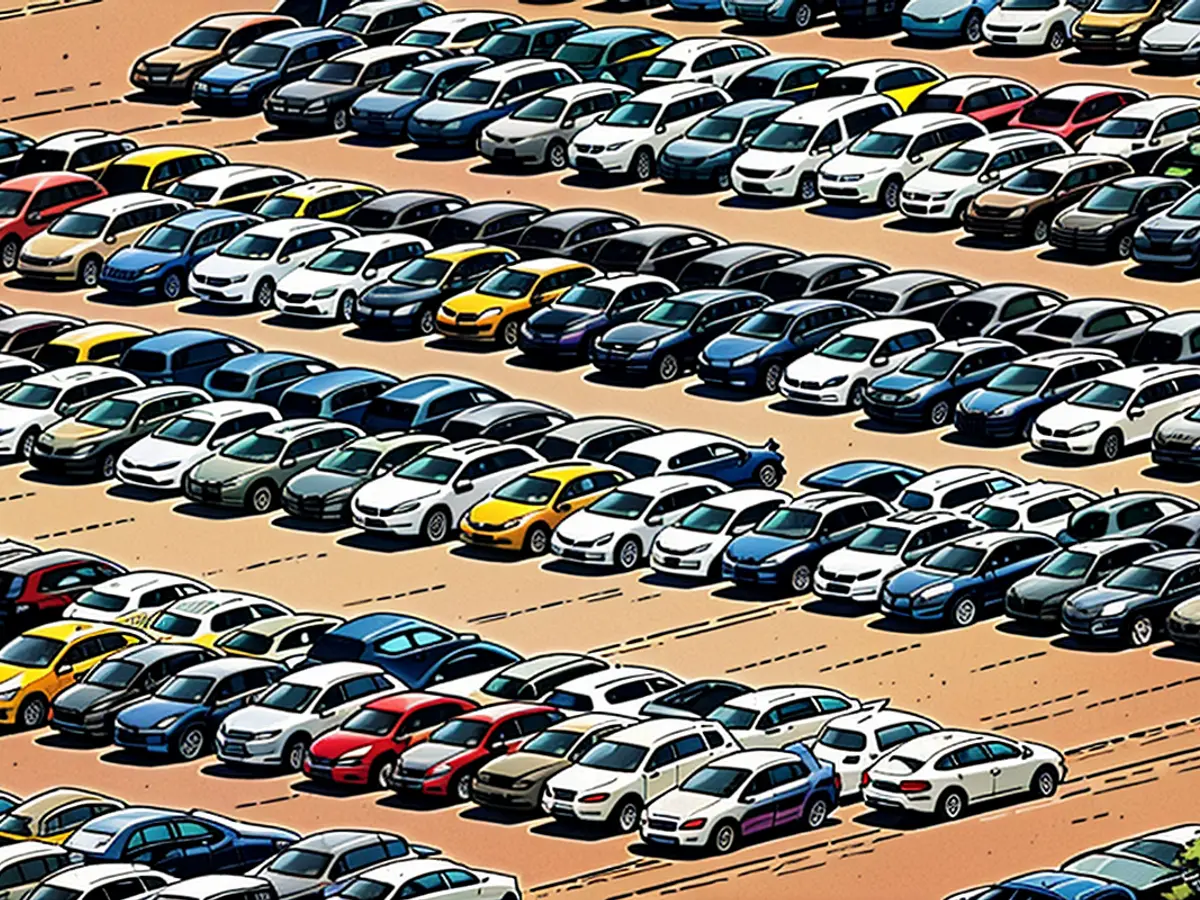The progress and challenges in autonomous vehicle operation are being examined.
As of now, vehicles are only automated for slow-speed driving on highways, with some soon capable of operating at 95 km/h. The development of autonomous city driving is also imminent. To make this a reality, several aspects need to be addressed:
For years, automakers have been promising autonomous driving, using intricate sensor, camera, and AI systems. However, the technical obstacles seem daunting. Nonetheless, there's progress in the realm of self-driving cars. By early 2025, Mercedes-Benz plans to provide Level 3 autonomous driving capabilities up to 95 km/h in certain vehicles. In mid-2025, Stuttgart-based Mercedes aims to introduce a 2++ system for city driving in China, while Nissan intends to commence automated driving by 2027.
Let's delve into the main topics surrounding autonomous driving and the various levels it encompasses:
What is autonomous driving?
The automotive industry categorizes autonomous driving into five levels: Assisted (L1), Partially Automated (L2), Highly Automated (L3), Fully Automated (L4), and Autonomous (L5). Level 2 permits the car to control steering, braking, and acceleration under certain conditions, such as adaptive cruise control or lane change assistance, but the driver must remain vigilant with their hands on the wheel.
At Level 3, the vehicle takes charge of these tasks under defined conditions. The driver may engage in secondary activities like reading, watching videos, or using their phone. However, they must regain control in critical situations or when prompted by the vehicle.

At Level 4, the vehicle assumes driving responsibility, with the driver acting as a passenger. They can take control if they wish. At Level 5, the vehicle can manage all driving tasks without the need for a steering wheel or pedals at any time.
Professor Markus Lienkamp, of the Technical University of Munich (TUM)'s Vehicle Technology Chair, explains, "Level 3 is an entirely different world. The responsibility lies with the car. It must inform the driver that they need to take control within 4-8 seconds if it cannot continue driving on its own and maintain a safe state for up to 8 seconds."
What conditions must cars meet to drive autonomously?
To enable Level 3 autonomous driving, a car must fulfill certain requirements based on international regulations (UN R3157), such as independently executing specific driving tasks. Mercedes-Benz has achieved this on highways up to 60 km/h, while BMW will offer a similar system, the Personal Pilot L3, for the 7 Series from March 2025. No manufacturer has yet obtained a license for use outside of highways, including in cities.
What are the challenges in autonomous driving?

The challenges in autonomous driving stem from the need for systems that work flawlessly – 99% efficiency is insufficient. The technological requirements are substantial: over 40 assistants work with camera, radar, and lidar in a Level 2 system like that of Mercedes-Benz. Highly automated cars require monitoring systems, such as cameras, lidar, radar, and ultrasound, as well as highly detailed maps and centimeter-accurate positioning through satellites.
Taner Kandemir, project leader for autonomous driving at Mercedes-Benz, highlights, "The transition from Level 2 to Level 3 is enormous. For safety reasons, systems such as brakes, steering, and electronics must be redundantly designed in a Level 3 vehicle, ensuring that a backup system can take over in the event of a component failure."
Regarding automotive driving, autonomous driving works on designated highway sections without construction, on the far right lane, and only until sunset – currently, only in Germany and the US states of Nevada and California. The German approval process for rural roads and cities is still pending, while a city system is being tested in China, although with somewhat abrupt braking. This system is anticipated to be available for ordering next year.
Before driver relaxation behind the wheel, there are a few points to keep in mind: The Drive Pilot assistant from Mercedes offers Level 3 highly automated driving on highways, expected to be available by 2025, with the capacity to reach 95 km/h on the right lane and 60 km/h on the middle lane. However, the system doesn't operate during lane changes, in construction zones, tunnels, poor weather conditions, or below 4 degrees Celsius. Therefore, driving should occur in front of a vehicle that is not traveling faster than 95 km/h. To activate the system, a button on the top edge of the steering wheel must be pressed.
When can we expect city-level autonomous driving?

Autonomous driving is already a reality on German highways, but we might need to wait a few more years for rural roads and urban areas. Experts predict deployment by the end of the decade. While technically, level 2++ assisted driving is possible in Germany, official approval is still pending as per industry reports.
On the highways, progress continues at a steady pace: "Our objective by the end of the decade is to maintain a speed of 130 km/h on highways," says Taner Kandemir. This speed coincides with the maximum allowance for highly automated driving as well.
Professor Lienkamp sees the primary advantage of level 3 systems on monotonous highway routes. In urban settings with complex environments and challenging situations, he considers the benefits of level 3 vehicles to be minimal.
"In such situations, it's better to opt for level 4 vehicles. These self-driving taxis can navigate autonomously to their destination and are commercially viable," explains Professor Lienkamp. The TUM has been working on a level 4 vehicle for several years now. Towards the end of September, a modified VW bus equipped with open-source technology successfully drove autonomously through Munich's streets, recognizing traffic lights, pedestrians, and adhering to traffic rules.
In critical situations, developers could remotely take control of the car, and a safety driver remained behind the wheel during the drive. "By doing this, we aimed to demonstrate our capability to develop level 4 cars in Germany and advance the technological development," concludes Professor Lienkamp.

What will be the cost of autonomous driving cars?
Currently, autonomous car technology is quite expensive, costing tens of thousands of euros. BMW charges 6,000 euros for its highway assistant, whereas Mercedes-Benz starts at 5,950 euros. Therefore, affordable automated driving will only be feasible for luxury vehicles or commercial use in the near future. If the technology can replace a driver in these sectors, it may become economically viable.
With the introduction of Level 2++ systems by Mercedes-Benz in mid-2025 for city driving in China, other vehicle manufacturers are also planning to join the autonomous driving scene. For instance, Nissan intends to commence automated driving by 2027. (This sentence contains the words: ['Other vehicles'])
Despite progress in self-driving cars, achieving Level 4 autonomous driving, where the vehicle assumes driving responsibility with the driver acting as a passenger, remains a challenge. Highly detailed maps, centimeter-accurate positioning, and monitoring systems are essential components that need to be in place. (This sentence contains the words: ['Other vehicles'])









